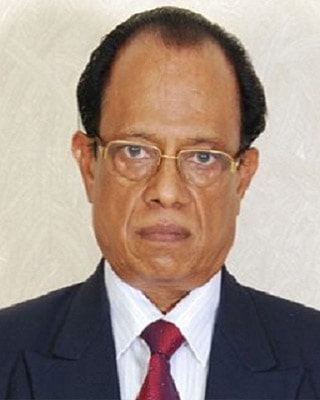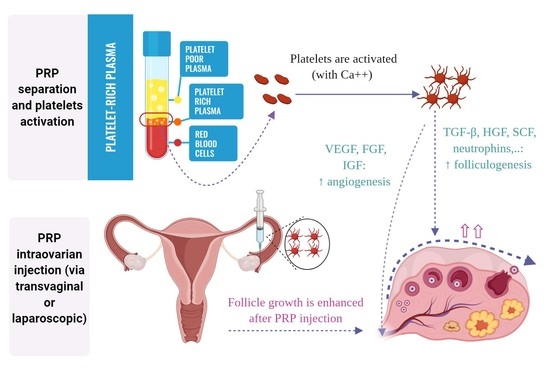Ovarian Rejuvenation with PRP
Platelet Rich Plasma

Dr. M.L. Goenka
IVF SPECIALIST
With the global modernization, women tried to delay their childbearing due to professional commitments and seeking better living conditions. During last 3-4 decades there is significant rise in the mean age of first time mothers, ranging between third and fourth decade. This is associated with ovarian aging, characterized by declining oocyte quantity and quality which is an unresolved problem.
Women with poor ovarian reserve or those with ovarian failure with low AMH had only one option to conceive that is Test Tube baby (IVF) with donor eggs. IHR has developed a program where those patients with very low AMH / Poor ovarian reserve can have a chance to conceive with their own eggs. This program consists of:
- Yoga
- Nutritional Therapy
- Ovarian Rejuvenation with PRP
IHR is one of the oldest Fertility Center in India, providing PRP therapy for management of Poor Ovarian Reserve.
What is PRP?
Our blood is made of solid part (cells) and liquid part (plasma). There are mainly three types of cells in blood: RBC, WBC and platelets. RBC and WBC are removed from the blood by specially designed equipments and remaining platelets are highly concentrated (8 – 10 times of normal) in plasma which is called Platelet Rich Plasma or PRP.
How PRP works:
Platelets have many growth factors. Growth factor’s primary role is to trigger cell division and is responsible for formation of new cells; growth of tissues, and most importantly wound healing. This wound healing capability of PRP has been used for many years to accelerate healing in sports injuries. PRP is also used in regeneration of hairs. The same way PRP injected directly in to ovary can stimulate the endogenous stem cells in ovary to regenerate egg – precursor cells and rejuvenate the ovary.
Is PRP therapy effective for rejuvenation of ovaries?
PRP therapy has been used successfully worldwide and has helped women with premature ovarian insufficiency and menopause to give them an opportunity to have a child with their own eggs. Several children have been born following this procedure.
How the procedure is performed:
The procedure is simple and is done in two steps.
- Preparation of PRP:
- PRP is extracted using a specially designed centrifuge machine at a temperature of 16°C in special conical tubes.
- The patient is given oxygen 5 liters per minute for 5minutes to get better quality of plasma and platelets. While oxygen is going on, about 30 to 40 ml of blood is taken from the patient in pre-cooled (at 16°C) tubes containing special anticoagulants.
- The tubes are centrifuged at 16°C. Blood separates in three layers. The lower part contains RBC & WBC and the upper layer with Platelets and plasma is removed and processed again to get almost 8–10 times the concentration of platelets with growth factors. The whole procedure is to be done at 16°C to prevent premature activation of platelets. The prepared platelet solution (PRP) is to be used immediately.
- PRP infusion in ovaries:
- Just before infusion in ovaries Platelets in PRP solution are activated by adding some chemicals to it. The infusion of PRP in ovaries is similar to Ovum Pick-Up (OPU) procedure during IVF. This is done under local anesthesia or IV anesthesia so that you do not feel any pain during the procedure. The whole procedure takes 2- 3 hours.

How PRP infusion is done?
Between the 2nd to 4th days of the menstrual cycle, the patient is called on an empty stomach at the clinic. Under mild IV anesthesia and USG guidance, a PRP sample is injected into both ovaries. The process takes 15 to 20 minutes. The patient can go home 1– 2 hrs after the procedure. The process is repeated every month for three months.
Who can go for the PRP therapy:
- Premature Ovarian Failure (POF).
- Women of advanced maternal age (menopausal and premenopausal women) – PRP therapy can help to grow more eggs, which may increase the chances for a positive result in the IVF cycle or for spontaneous pregnancy.
- Recurrent failed IVF cycles due to poor quality of eggs.
For women, it’s an opportunity to reverse the biological clock!

What is ovary PRP therapy cost
Can prp treatment work on primary amenorrhea . My age is 35 and my ovaries are not visulised on ultrasound. May be atrophic or streak ovaries
Will this treatment work on me to produce my own eggs or to be conceived with my own ?
Hello K R Rajput
The prp treatment will not work on patients with primary amenorrhea.
Hello! I am your colleague from Georgia. Can you answer my question, My question is about ovarian rejuvenation of platelet-rich plasma (PRP). I am 48 years old. The last menstrual cycle July 2020. If it is possible for me to undergo this procedure since I am in menopause. You have indicated on the site that it is possible. Thank you very much. Best Regards
SHORENA DZVELAIA
You can undergo this procedure . The success rate of resumption of menstruation is about 20-25% . There are many reports in the literature where post- menopausal women have regained their menstruation and some of them have conceived also. The procedure is to be done through laparoscopy under anaesthesia.
This procedure is still labelled as experimental.
Hello! I am your colleague from Georgia. Can you answer my question, My question is about ovarian rejuvenation of platelet-rich plasma (PRP). I am 48 years old. The last menstrual cycle July 2020. If it is possible for me to undergo this procedure since I am in menopause. You have indicated on the site that it is possible. Thank you very much. Best Regards
You can undergo this procedure . The success rate of resumption of menstruation is about 20-25% . There are many reports in the literature where post- menopausal women have regained their menstruation and some of them have conceived also. The procedure is to be done through laparoscopy under anaesthesia.
This procedure is still labelled as experimental.